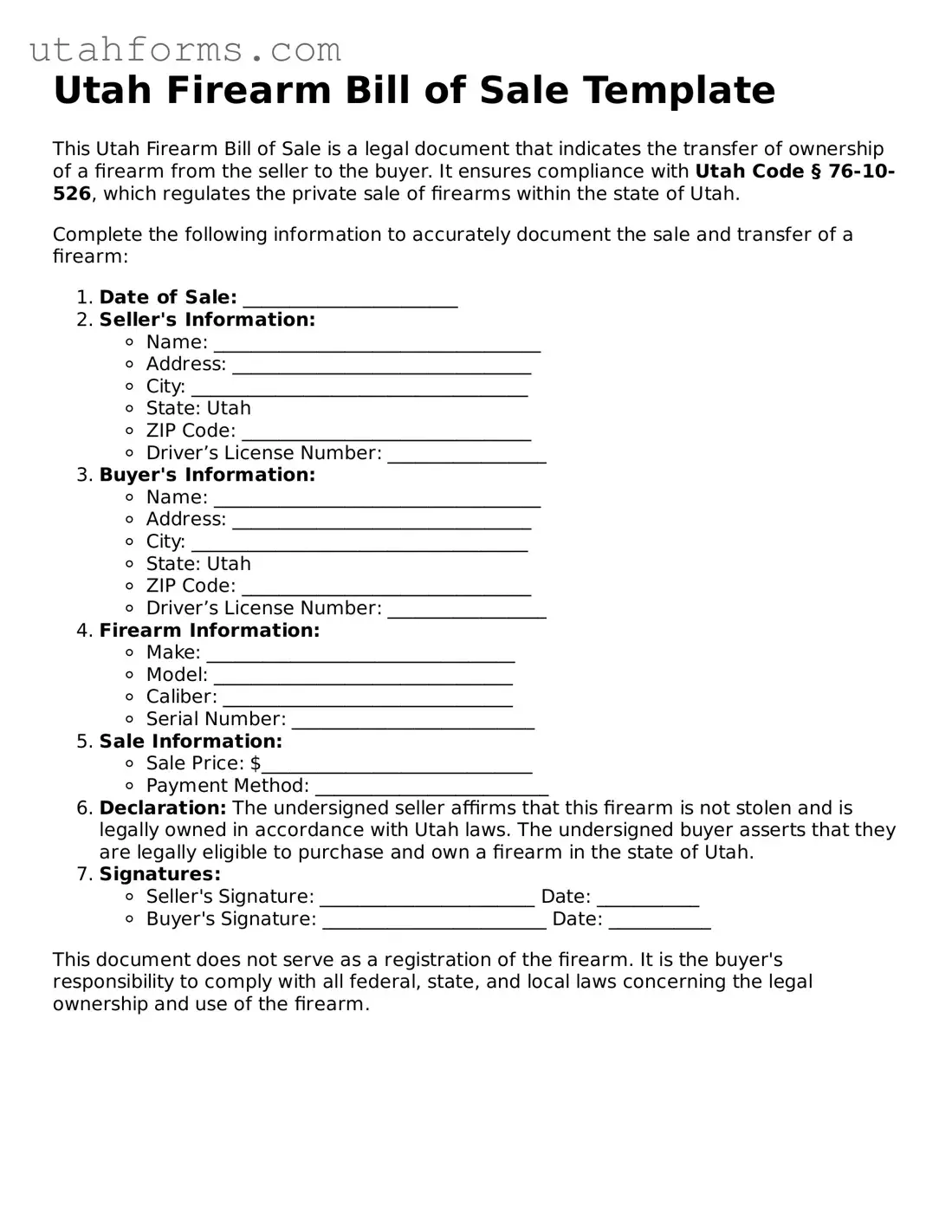The Vehicle Bill of Sale form, similar to the Utah Firearm Bill of Sale, serves as a documented agreement for the transfer of ownership of a car from the seller to the buyer. It details the make, model, year, and VIN, akin to how the firearm bill of sale specifies the make, model, and serial number of the firearm, establishing a clear record of the transaction.
A Boat Bill of Sale form echoes the structure seen in the firearm bill of sale by providing a written record of the purchase and sale of a watercraft. Specific details like the boat’s model, manufacturer, and hull identification number parallel the firearm form's approach to capturing unique identifiers, ensuring both parties acknowledge the transfer of ownership.
The Equipment Bill of Sale form catalogues the transfer of ownership of equipment from one party to another, mirroring the firearm bill of sale. This document outlines the equipment's description, condition, and identification number. The specificity ensures a mutual understanding of the item being sold, just as the firearm form does for firearms transactions.
A General Bill of Sale form, used for various items not specifically categorized, like the Utah Firearm Bill of Sale, records a transaction between two parties. It is versatile, covering items from furniture to electronics, ensuring there is a legal document to evidence the agreement, which is crucial for both buyer and seller protection.
The Pet Bill of Sale form, while for a completely different category of ‘item’, is similar in its function to document the sale and transfer of ownership, in this case, of a pet. It typically includes details such as breed, date of birth, and health information, paralleling the detail-oriented nature of the firearm bill of sale to ensure clarity and agreement between parties.
Real Estate Bill of Sale forms are used to document the transfer of tangible assets associated with real estate, not the property itself. This is similar to the firearm bill of sale in its documentation of ownership transfer of a specified item, providing detailed descriptions to minimize disputes, further illustrating the importance of specificity and mutual agreement in sales transactions.
Aircraft Bill of Sale forms carry out a similar role in the aviation sector, providing a legal record for the sale of an airplane. It carefully documents airplane specifics, including model, make, and identification numbers, reflecting the firearm bill of scale's approach in ensuring the identification of the item being sold is unmistakable and agreed upon by both parties.
An Artwork Bill of Sale is essential for transactions involving art, detailing the piece's creator, origin, and authenticity. Like the firearm bill of sale, it serves to protect both buyer and seller, verifying the item's description and ownership change. The emphasis on accurate descriptions underscores the importance of transparent dealings in transactions.
The Business Bill of Sale form documents the transfer of ownership of a business from a seller to a buyer. Similar to the firearm document, it includes critical information about the business being sold, ensuring all assets and liabilities are accurately accounted for, much like how a firearm bill of sale catalogues the specifics of the firearm transaction.
Lastly, the Machinery Bill of Sale form, used for the sale of industrial machines, reflects similar functionalities to the firearm bill of sale by detailing the machine's make, model, and condition. This similarity underscores the universal need across different sectors for detailed documentation in ownership transfer processes, protecting both parties involved in the transaction.
